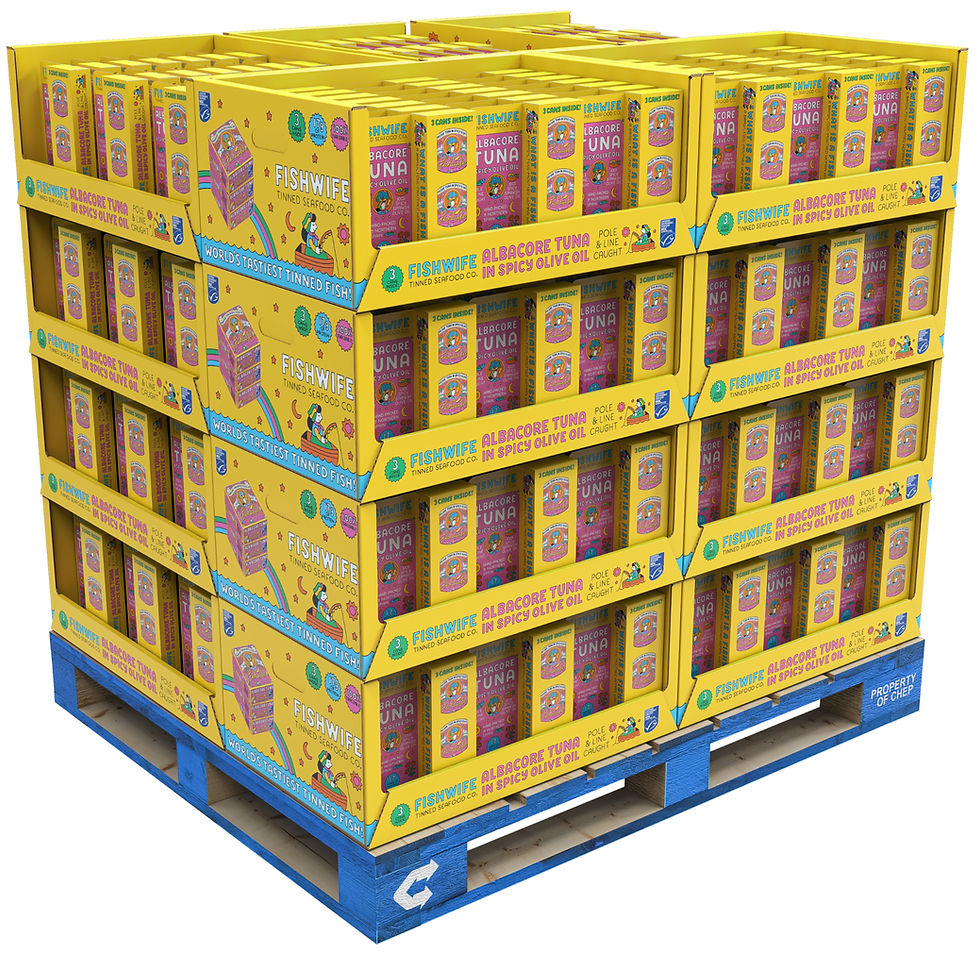Our role in Costco's Sustainable Packaging Guidelines
- The Costco Packaging Guys

- Apr 6, 2020
- 3 min read
Sustainable, green, earth friendly, eco-friendly and reduced carbon footprint and are all terms we attach to packaging making strides for environmental improvement. What's the "right" thing to do for sustainability is not an easy answer. Adding to the complexity, design, materials, customer experience and budget are often at odds with one another. Falling back to using traditional packaging materials which are simply easier to design and less expensive to purchase are often chosen at the expense of the environment. The continued use of Expanded Polystyrene (Styrofoam) and PVC in situations when sustainable molded fiber or readily recyclable Polyethylene plastics are available are evidence of this.

In the last year we've seen the sustainability tide changing in a couple notable areas; Consumer awareness and Corporate guidelines.
In the last year we've seen the sustainability tide changing in a couple notable areas; Consumer awareness and detailed Corporate guidelines. We've all seen portions of Greta Thunberg speeches, stats on the size of the Great Pacific Ocean garbage patches (yes, there are 2 of them), images of plastics in our environment and the serious concern surrounding microplastics. More than ever, customers are driving decisions on product purchases based on responsible packaging and are calling out violators on social media which can have lasting effects to sales of the company being called out as well as the retailer.
Corporations such as Costco are creating and regularly updating guidelines on sustainable expectations and making sustainable commitments at a corporate level.
Click here to, download Costco's Global Sustainable Packaging Guidelines
The good news to all of this is that creating sustainable packaging has more benefits than just doing the right thing for the environment. Protecting and growing your sales as customers become more educated on sustainable packaging as well as buyers looking at packaging sustainability from a corporate compliance standpoint are increasing in importance.
Let's dig into some of the highlights of the Costco Packaging Guidelines:

Material choices
Use of materials with a high recyclability rate (think of anything which can be curbside recycled) and materials with a high recycled content are two of the primary objectives.
Corrugated packaging checks both of these boxes. The Fibre Box association reported in 2018 corrugated containers had a 96% recovery rate. Additionally, the average corrugated box contains 50% recycled content. Impressive numbers.
When in doubt on choosing the best packaging material for the environment, default to paper. The reason people don't use paper more often is that design can be much more challenging. To ensure this doesn't happen to you, choose your packaging development partner wisely.
Design optimization
Optimizing design by reducing materials is a great way to improve sustainability (and reduce cost) although it's important to manage properly. As we have talked about in previous articles, ensuring your pallets flow efficiently through Costco's supply chain cannot be compromised. Costco will offer no leniency to packaging with structural issues and there is no reason why there should be if design is managed properly. Improvement of pallet utilization is a great place to start to improve your sustainability.
EPS elimination
EPS is a universally disliked packaging material. There are a few product categories which simply cannot be efficiently distributed without the use of EPS. For everything else, molded fiber (commonly produced from recycled corrugated) or a corrugated designs are excellent substitutes. If you are struggling getting out of EPS for your primary packaging, please reach out to us for advice.
Elimination of hazardous content
Especially if you are producing outside of the US, it's critical to get data ensuring our packaging design does not contain hazardous content. If you cannot get this from your current supply chain, look for another source. All reputable manufacturers world wide have access to this data. Costco includes these examples of materials to eliminate:
● Dioxins ● BPA (Bisphenol A) ● BPS (Bisphenol S) ● PFAs (Polyfluorinated Alkyl Substances) ● PVCs (Polyfluorinated Compounds) ● Phthalates ● Heavy metals such as: ○ Lead ○ Cadmium ○ Mercury ○ Chromium ○ Barium ○ Nickel ○ Cobalt ○ Arsenic ○ Copper
Sustainable-management certifications
The goal behind sustainable-management certifications is ensuring the virgin paper which is being used in packaging is not sourced illegally or contributing to deforestation. FSC, SFI and PEFC are all organizations which certify the source of virgin fiber. In the past there was often a significant cost premium for this certification although recently this cost has reduced as more and more paper mills are producing certified paper. In the US, using material without a certification is rarely a concern. Although it's not required by Costco, knowing your material supply chain in Asia is often recommended.

In summary:
Costco admits in their Sustainable Guidelines, "We do not have all the answers, are learning as we go and seek continuous improvement" and we couldn't agree more. The Costco Packaging Guys are always working on sustainable design innovation. In the next few weeks, we'll provide updates on how you can apply better design to your Costco packaging to improve sales and sustainability.
Until next time.
Cheers,
TCPG






Comments